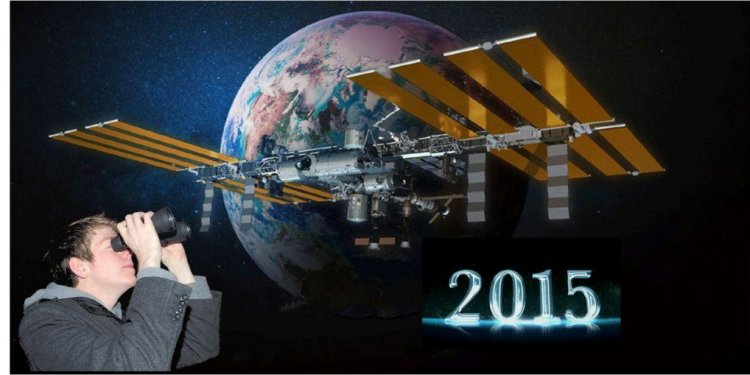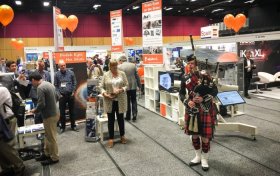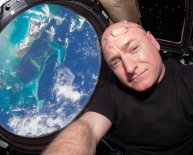
Astronomical current events
 A conference focused on instrumentation for astronomy, across different subfields
A conference focused on instrumentation for astronomy, across different subfields
The #SPIEastro conference is unique amongst other astronomy conferences in many ways. First, it is large—up there with the American Astronomical Society (AAS) meetings. However, unlike the AAS meetings which in a sense cover everything in astronomy, #SPIEastro focuses its scope on astronomy-technology. It’s an avenue where instrumentalists can share amongst their peers their latest results, and the status of their instruments before, during, or after commissioning. What worked? What hasn’t? What drives the instrument design? What capabilities will this new technology enable? What questions can this technology answer? Discussing instrument designs, and questions like these helps avoiding design flaws and minimizes wasted efforts at suboptimal solutions, reducing efforts at reinventing the wheel. Let’s reuse the wheel, and focus on the exciting things.
Besides the numerous poster and parallel talk sessions, #SPIEastro—like other SPIE conferences—features a dedicated vendor exhibit. For two days, vendors and suppliers of astronomy-related technologies (e.g., suppliers of telescopes, domes, detectors, filters, optical fibers, glass, cryo-coolers, etc.) had a dedicated exhibit room to display and showcase their products. A place where academia meshes seamlessly with industry, and a place where lots of business cards fly around, the vendor exhibit at #SPIEastro is a good place for job-hunting for candidates on the job-market. Also: lots of free swag!

New telescopes and instruments for ground and space
You can cover a lot of ground in 6 days of parallel talk and poster sessions.
Amongst others, there were many talks about the current status of space observatories, and notably so on the James Webb Space Telescope (JWST), which is on track for launch in late 2018 (Figure 3). Exciting emerging technologies were presented and discussed for future space-based missions, such as star-shades, better coronagraphs, future adaptive optics systems. Additionally, the status of concepts for future large-size space missions, e.g. the Far-IR surveyor, LUVOIR, HabEx, and X-ray Surveyor were discussed.
There were also many talks and posters on ground-based technologies. The presence and usefulness of photonics in astronomy was highlighted and featured in many talks. Photonics—the study and use of devices that steer and control light as it propagates through materials—is on the rise; the relatively new sub-field of Astrophotonics is emerging, and shows a lot of promise.
A look towards the future: the era of Extremely Large Telescopes and space-based direct imaging missions
The progress of astronomy throughout history has gone hand-in-hand with improvements in technology. At #SPIEastro there were many talks discussing the technology of tomorrow, and our visions towards the future.
One thing is clear: astronomy is moving towards larger apertures. The 10m telescopes of today will be the 4m telescopes of tomorrow; we are progressing into the era of extremely large telescopes (ELTs). These new telescopes and related instruments will help us push the limits of what we know about the Universe: we can characterize the variations of physical constants throughout cosmic time; we can look for rocky exoplanets in the habitable zone, and measure the constituents of their atmospheres; we can start to more precisely answer questions like: Are we alone? How did the universe begin? How will it end?
These are compelling questions. “Extraordinary claims require extraordinary evidence”, said Carl Sagan. With improved instrumentation, and an increased understanding of the data delivered from these instruments, we are taking strides towards answering these questions. So, see you in Austin, Texas at the next #SPIEastro in 2018 for the newest updates on astronomical instrumentation.
how much solution to drink for colonoscopy startup whom how much solution to put in vax carpet cleaner which system of equations is inconsistent roadmap when will hotels open where is gretchen from project runway how to use far manager product where name where design definition where to start business from home when solution of ni2 and nh3 combine how much business insurance cost where to watch business proposal kdrama how science and religion work together how much solution for hoover carpet cleaner what design can do when set up synonym where product key steam what solution is used for sclerotherapy where science fails who project in india when development proceeds in a stepwise fashion where to find device management on iphone where's the london bridge who system building blocks how much solutions are there why startups fail where to find device id on iphone how much manager make when device is locked where to print business cards who devised celluloid film how many product placements in he's all that why project management where is working solutions located why startup is important where to find system preferences on mac how much science is in psychology whose science was first called psychology how much entrepreneur make a year whose immune system is stronger startup cost whose operating system where to look from solutions how project management improves an organization s success
















